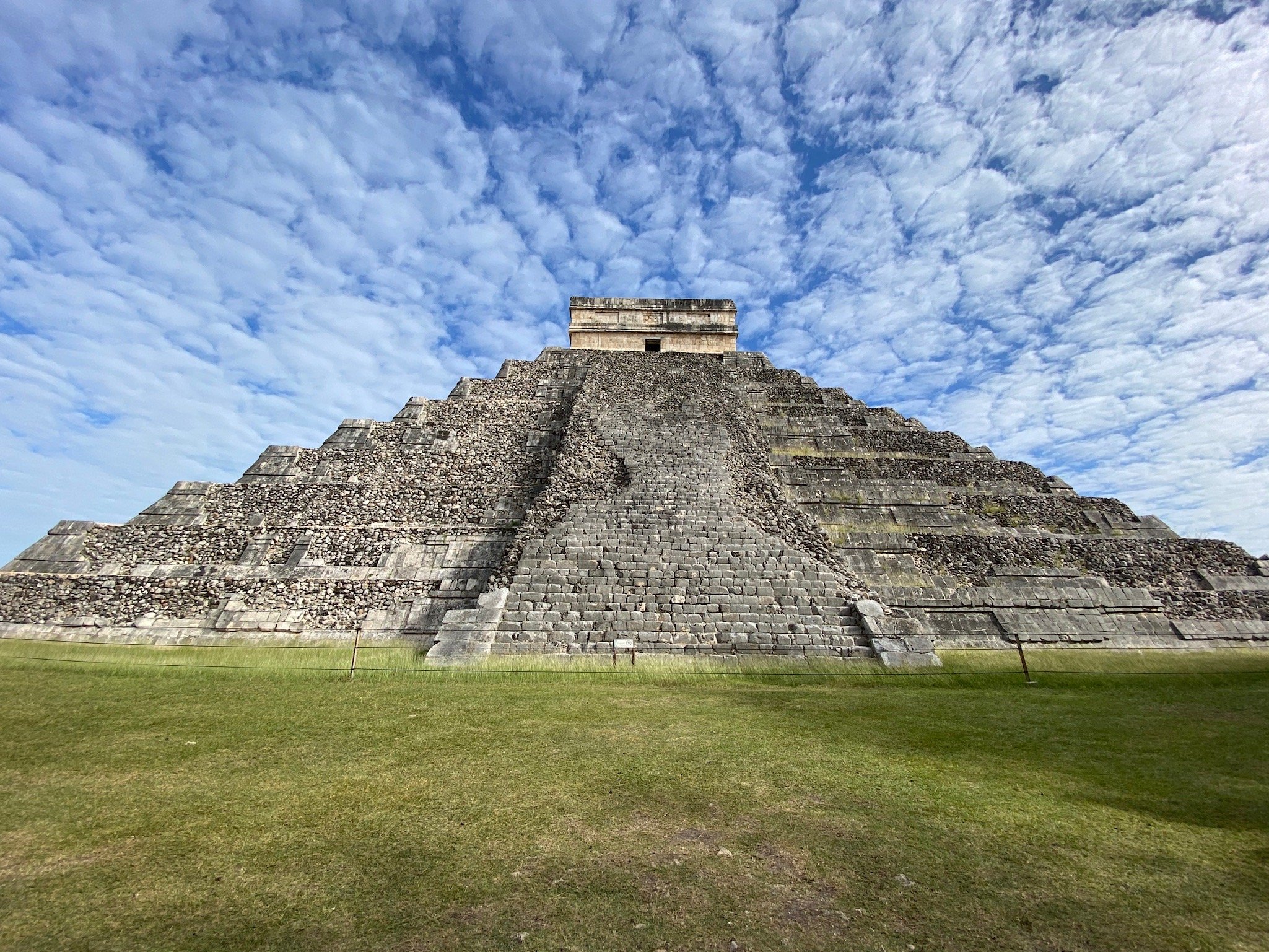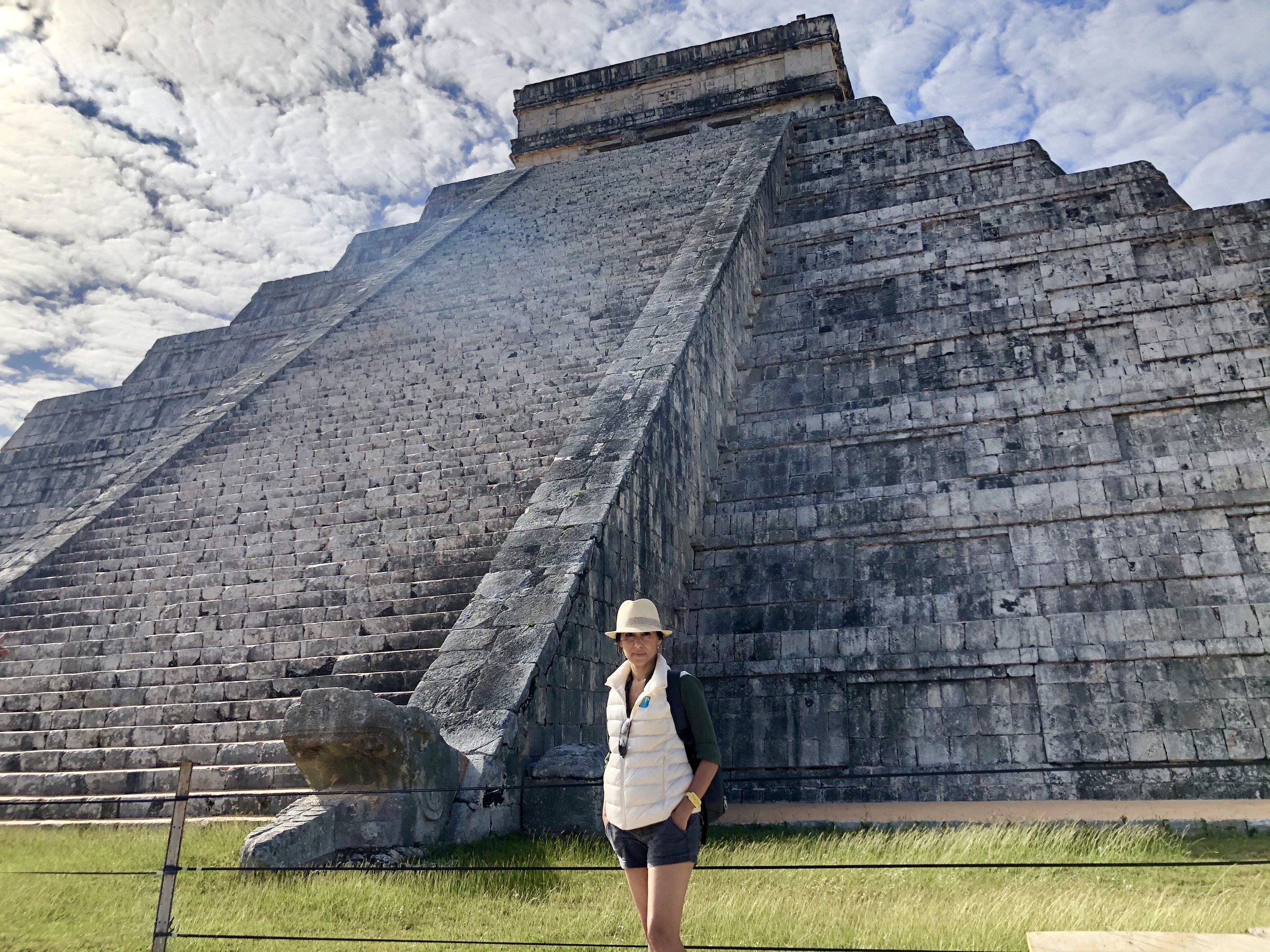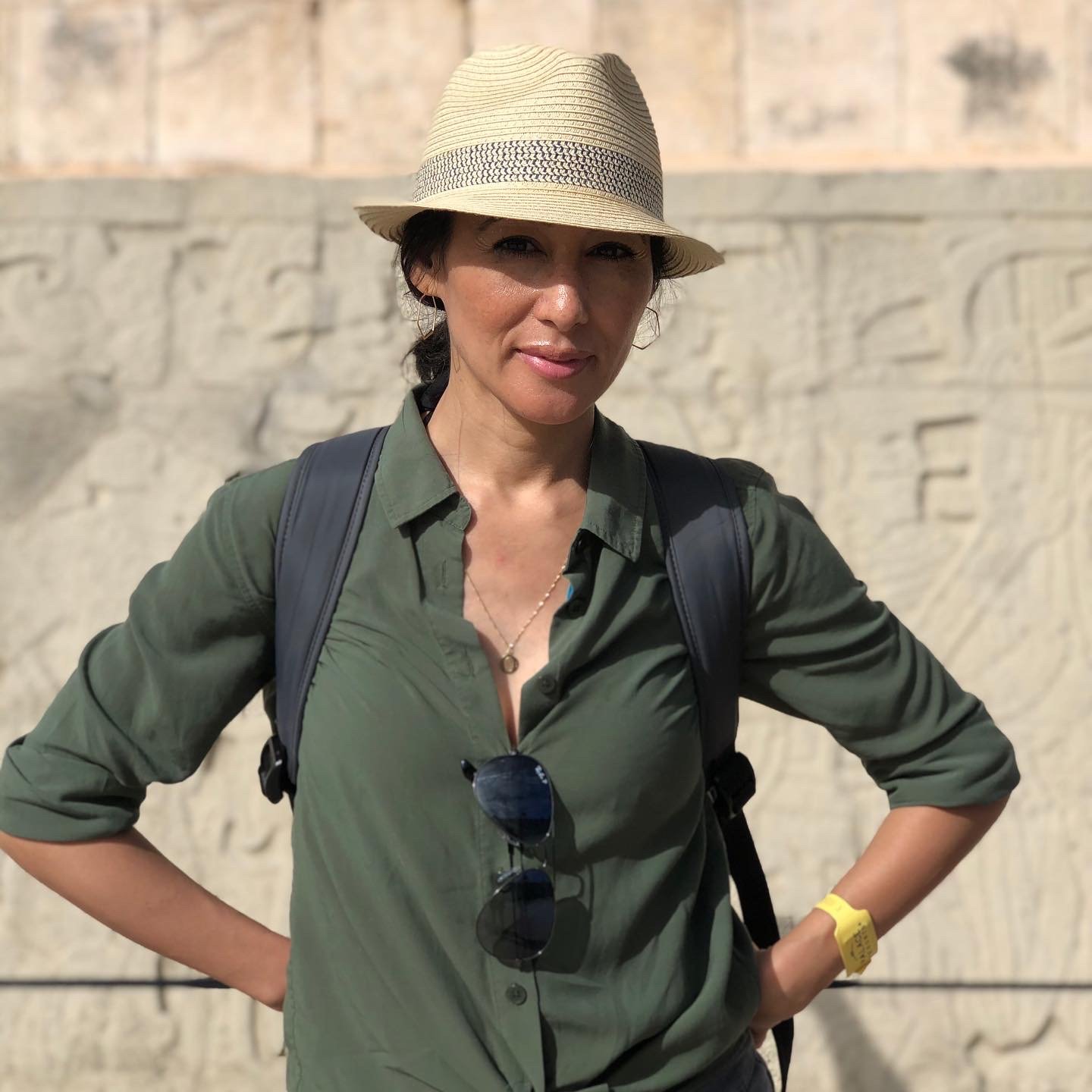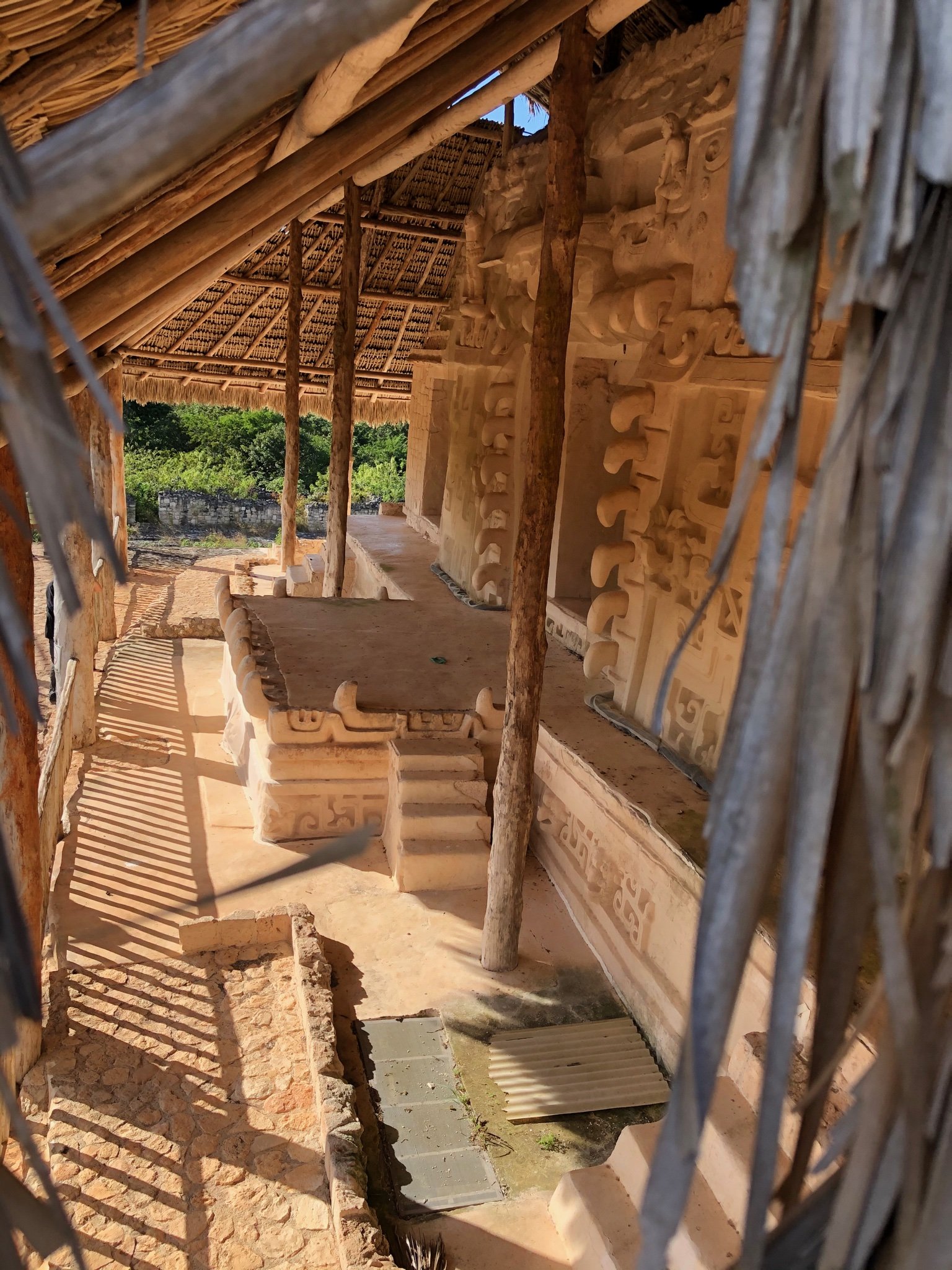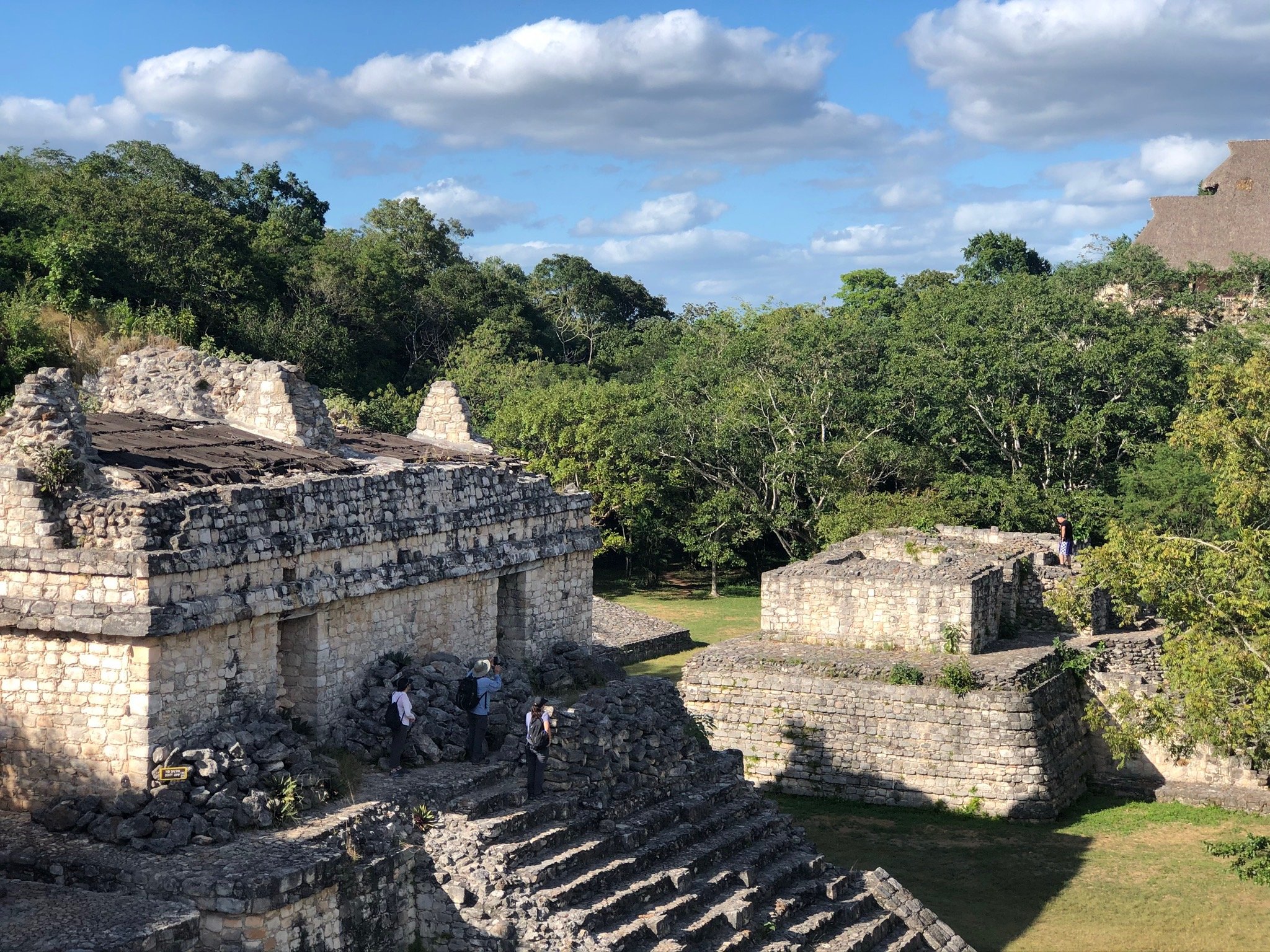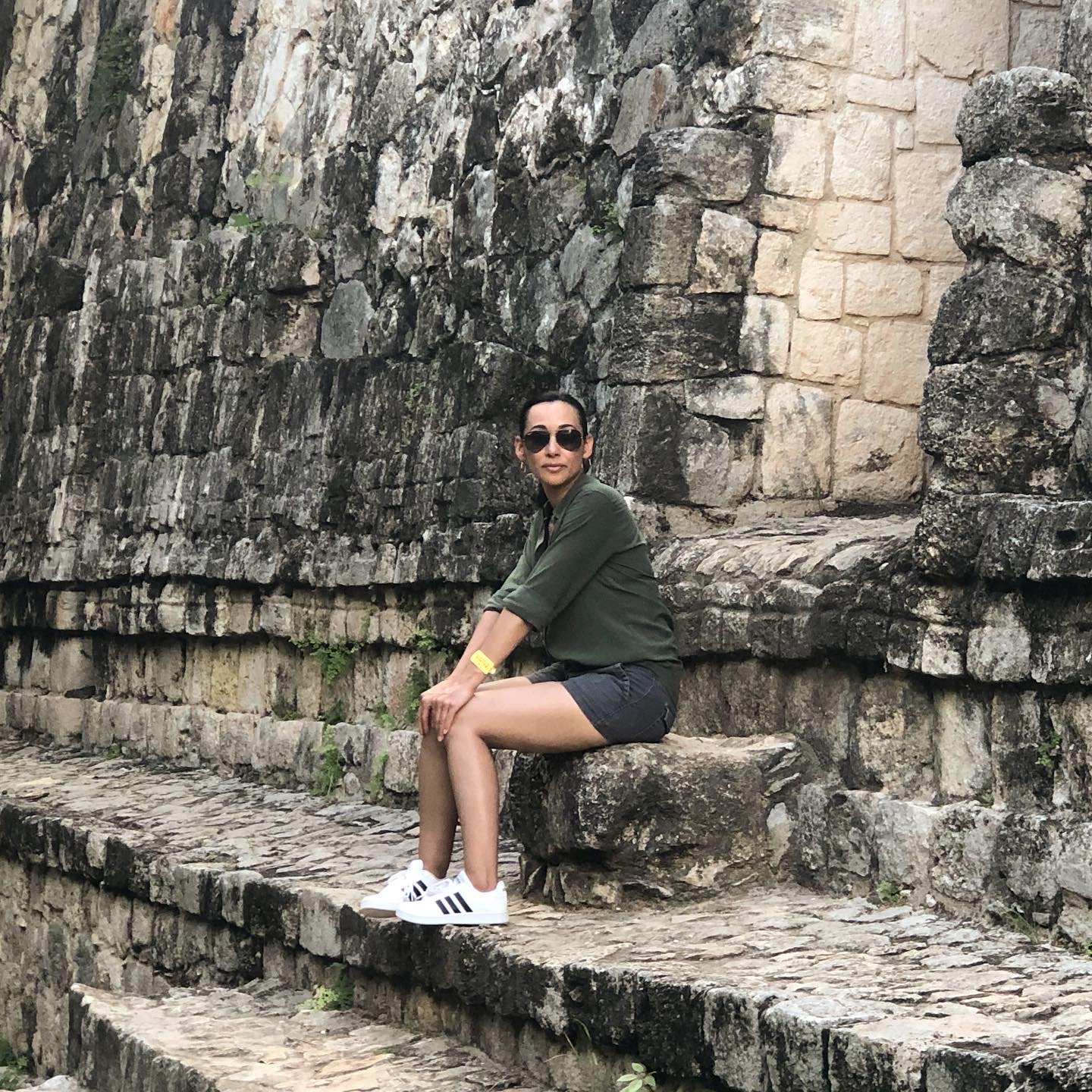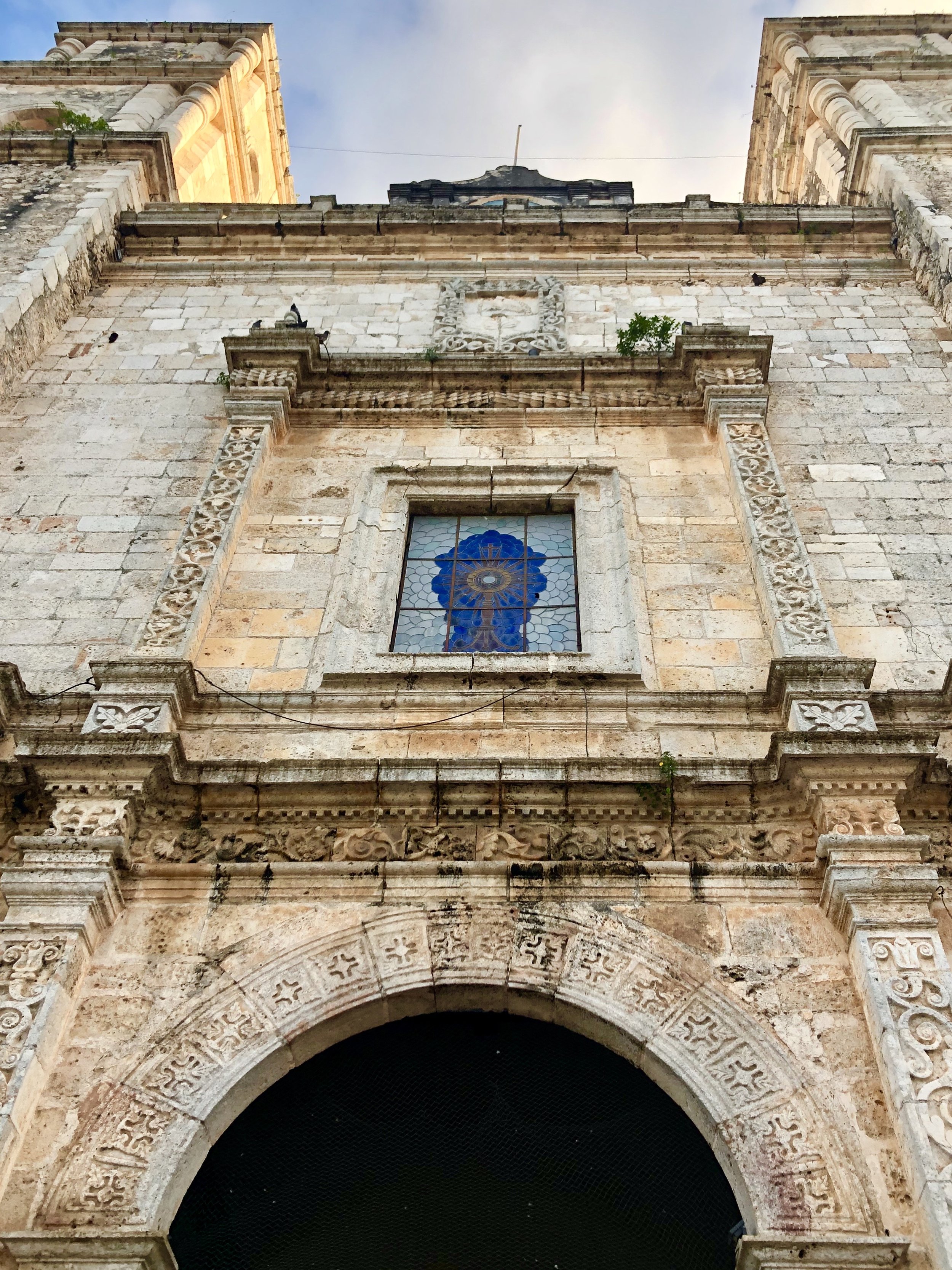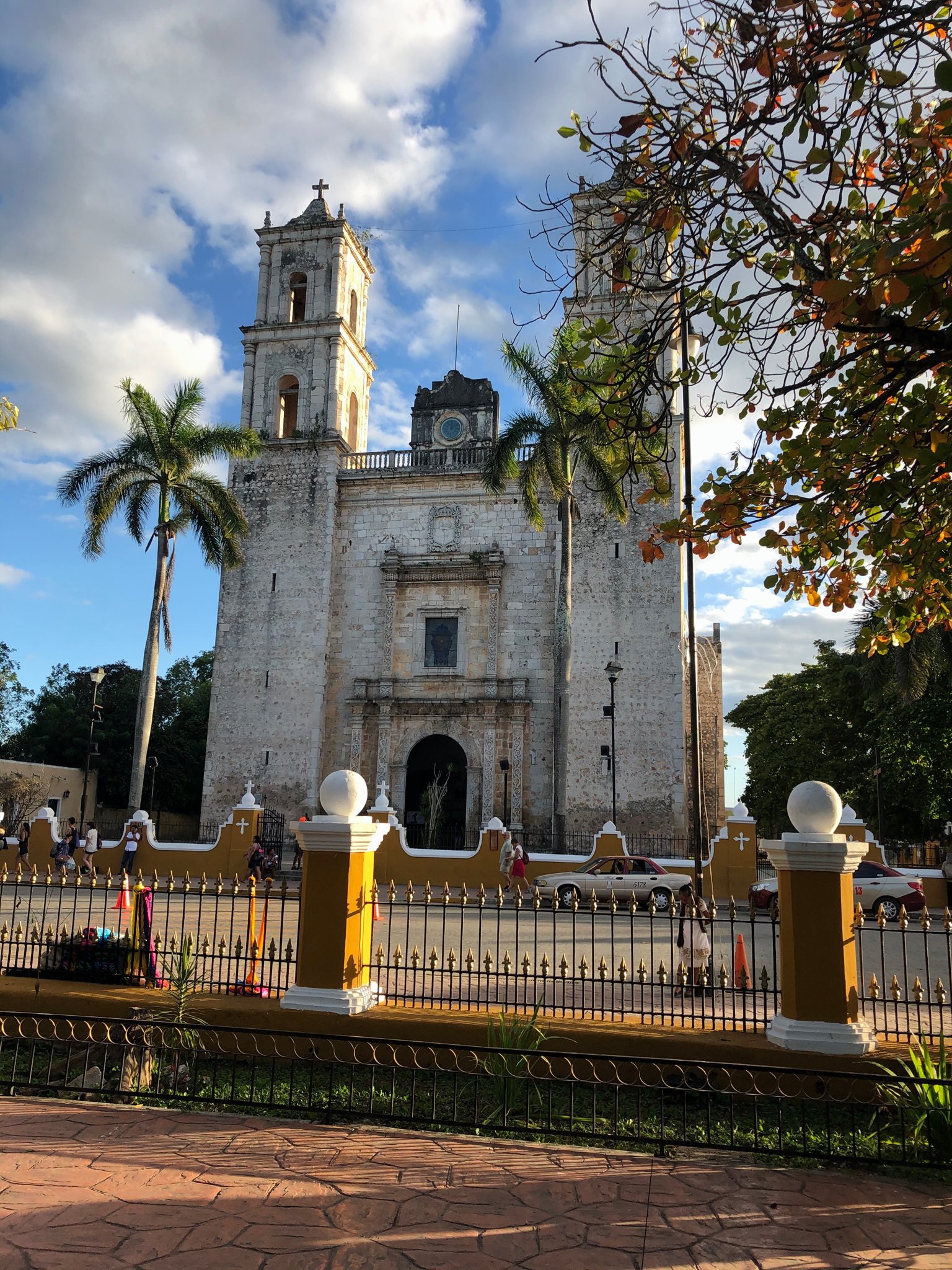Mexico: Chichen-Itza
January 30, 2020
CHICHEN-ITZA
I set my alarm at 4:00 a.m. to be at the dock by 6:00. By 7:30, the island of Cozumel was in our wake, and we were just 180 kilometers away from our destination in the heart of the Yucatan. The morning was overcast as we drove 3 hours in the early morning hours towards Chichen-Itza. Our plan was to arrive ahead of the droves of tourists guaranteed to arrive as the day wore on.
Right and Left: The central pyramid at Chichen itza, known as the pyramid of Kukulcan, and as “El Castillo” (the Castle, in Spanish).
Within the park gates, at the center of clustered ruins, rested the largest pyramid, seemingly in communion with the overcast sky. It was less than a generation ago that locals and tourists alike climbed up and down the partially reconstructed pyramid steps patiently waiting for transit. Before it was an archeological park and crowned UNESCO world heritage site, it was simply, a bus stop.
Every dirt path leading away from the central pyramid was lined with local vendors and the occasional stray dog. Vendors yelling, “cheaper than Walmart”, or “gift for your ex-boyfriend” (which I thought was particularly cleaver). It felt ancient, yet modern and very much alive. Just humans casually occupying, talking, selling, existing in their busy lives, on top of the the same gravel paths for thousands of years.
Right: A carving of the Mayan rain deity, Chaac. Left: Standing in front of the Hieroglyphs carved on the outside stone walls of the Mayan ball court.
Chichen Itza is more than a single partly reconstructed pyramid, but a cluster of ruins including a ceremonial ball court and an observatory. All kissed with ancient pigment and insurmountable stories to tell. Stories only previously revealed to me in museums and textbooks. Here - it all jumped out of the pages, claiming it’s very real place in the world - overgrown, sacred Cenote and all.
Right and Left: Carved facade adjacent to the central pyramid, known as “El Torre” at the Mayan ruins of Ek Balam, which is still being excavated.
EK BALAM
32 miles (52 kilometers) from Chichen Itza is Ek Balam in Temozón, Yucatán, Mexico. Ek Balam (translated as either Black Jaguar or Star Jaguar) offered a small cluster of ruins, once belonging to a vibrant Mayan city peaking somewhere between 770 to 840 CE. It was discovered in the 1800’s, then again in the 1980’s and explored more extensively in the 1990’s. The visit felt more intimate, with less tourists wandering the grounds. We were able to explore the grounds, and climb 95 feet up the tallest pyramid steps, rising above the jungle canopy. This view is both spectacular and electrifying (or perhaps it’s just the elevation).
Left and Right: Exploring additional ruins at Ek Balam, Valladolid, Mexico.
VALLADOLID
40 miles away from Ek Balam is Valladolid, a colonial town established in 1543, then relocated to its current location by the Spanish (which, by the way, was built directly on top of the Mayan town of Zaci).
The town center is filled with restaurants and artisan shops but feels anchored by the cathedral of San Servacio located across from the central plaza and is worth a visit.
While we didn’t stay long in the state of Yucatan. I plan to return to visit Merida and now have a list of local cenotes to visit next we travel to the state. The Yucatan is was worth the visit.
Left and Right: The facade of Cathedral of San Servacio in Valladolid, Mexico.
Travel Tip: When visiting Mexico and traveling into the rural areas, there are 3 items you must carry in your travel bag: 1. toilet paper, 2. hand sanitizer, 3. pesos, in case you need to pay a gas station attendant for access to a bathroom. In contrast, the entry gate of Chichen Itza offered clean bathrooms, snacks and beverages on tap. Pretty fancy.
THE PLAYLIST
If you are interested in what we listened to on our journey through the states of Yucatan and Quintana Roo, access our playlist on Spotify here.
Thank you for taking this journey with me!
From my heart center to yours,
NOEMI

